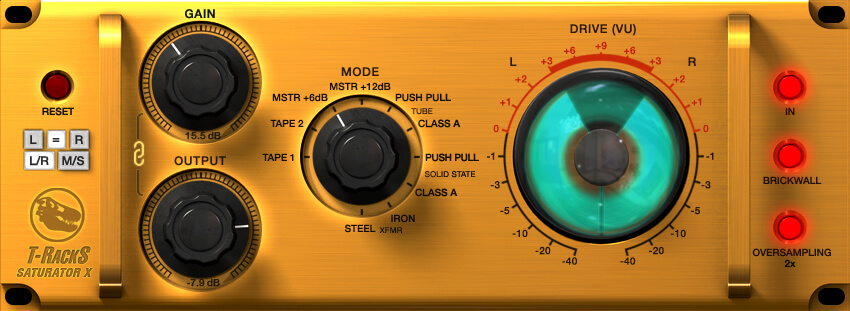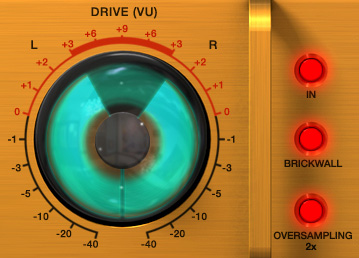The New T-RackS Saturator X Plug-in from IK Multimedia Makes Finding Great Tones Surprisingly Easy
The last frontier of plug-ins? Recreating the elusive subtleties of analog gear pushed to extremes and misbehaving. A perfect example is the new T-RackS Saturator X from IK Multimedia, a simple-yet-multi-faceted plug-in that captures vintage vibes and adds enough modern convenience to invite frequent use. [editor’s note – if you’re interested in learning more about analog tape recording, be sure to read the articles from our Special Tape Issue]
Bring in the models
It all starts with IKM’s modeling of ten different types of analog circuits as found in classic gear. Which ten is anybody’s guess (as nary a hint is given), but that’s of little concern unless you’re an audio scholar. Such scholars will find Sat X covers the main categories nicely … two tape modes (one a little darker and dirtier), two mastering modes (specifically designed to pump up mixes with muscularity and heft), two tube modes (Push Pull for its crunch, Class A for its sweetness and euphony), two solid state modes (very much like the tube modes, but with more clarity and transient preservation) and finally two transformer modes (Iron and Steel, with differences in harmonic content).

T-RackS Saturator X Plug-In from IK Multimedia
To kiss, or to crush?
One might expect Saturator X to be an all-out signal mangler capable of extreme distortions, and that wouldn’t be wrong, per se. You can crank the input gain and get each model (except the transformer modes) to distort beyond rational needs, but that’s not Sat X’s forte … subtle saturation is. Take drums for example … all ten modules offer various degrees of density, warming and personality if used judiciously. Look at vocals too … you can easily dial in a little tube glow (IKM calls it “halo”), or emulate some sag/give only when the vocalist hits the peaks, or push input gain up until walkie talkies, elementary-school PA systems, vocals thru guitar amps and megaphones are all realistically conjured up.
Too many circuits, too little time
Possibly, but Sat X makes finding tones surprisingly easy. First off, there’s wisely only ten modes … the versatility lies in the use of the input gain and output level controls. They are slaved together (can be separated) to achieve a consistent volume level (as you raise gain, output level lowers in proportion) and an output Limiter prevents nasty digital “overs.” Advanced users will delight in a Mid-Side mode and Oversampling (affects clarity and grit). There are also facilities to store four of your own created presets and quickly jump between them for difficult decisions — a time saving factor that is way more important than you might realize.
RELATED: read more plug-in and recording software reviews from Performer Magazine.
In good company
As a frequent user of competing products (both hard and software), I can say that Sat X does capture the non-linear behavior of hardware and provide a speedy workflow. That said, a few more features would take SatX into “best of market” territory … more metering than the Magic Eye provides, an adjustable low-pass-filter to smooth out treble response and a mix control to blend dry and saturated signals NY-style (aka parallel processing).

T-RackS Saturator X Magic Eye Metering
Nonetheless, your band and/or clients will appreciate Sat X on some level, whether it’s modernizing a bass guitar DI track with tube crunch, or beefing up your drum busses with transformer fullness, or adding gravitas to the whole mix with a mastering setting. At $79 direct, Sat X looks like an easy way to simulate a large rack full of analog gear and abuse it into pure artistry, all without fear of blown fuses, high maintenance costs or frying valuable collectibles.
Interested? Try out the unrestricted 14-day demo and get down-n’-dirty, or should I say saturated.
PROS:
Captures vintage vibes, simple to use, lots of sonic possibilities.
CONS:
Would be nice to have more metering and an adjustable low-pass filter.
PRICE:
$79
–Rob Tavaglione owns and operates Catalyst Recording in Charlotte, NC.
